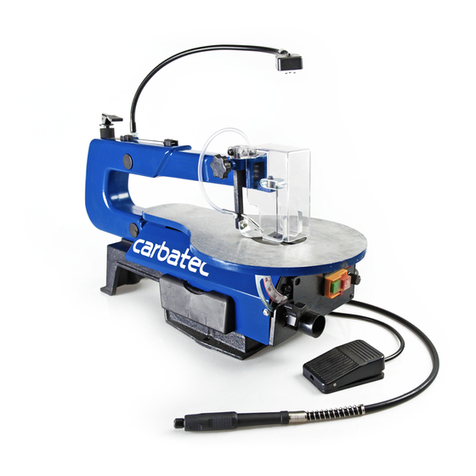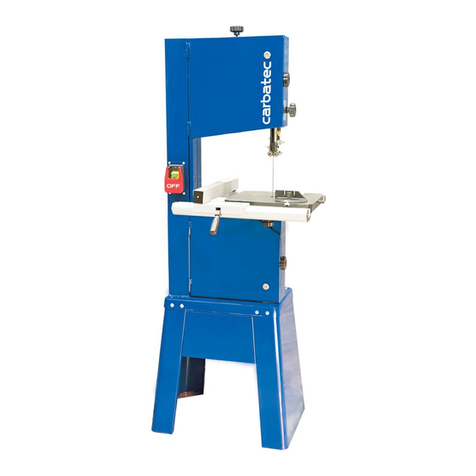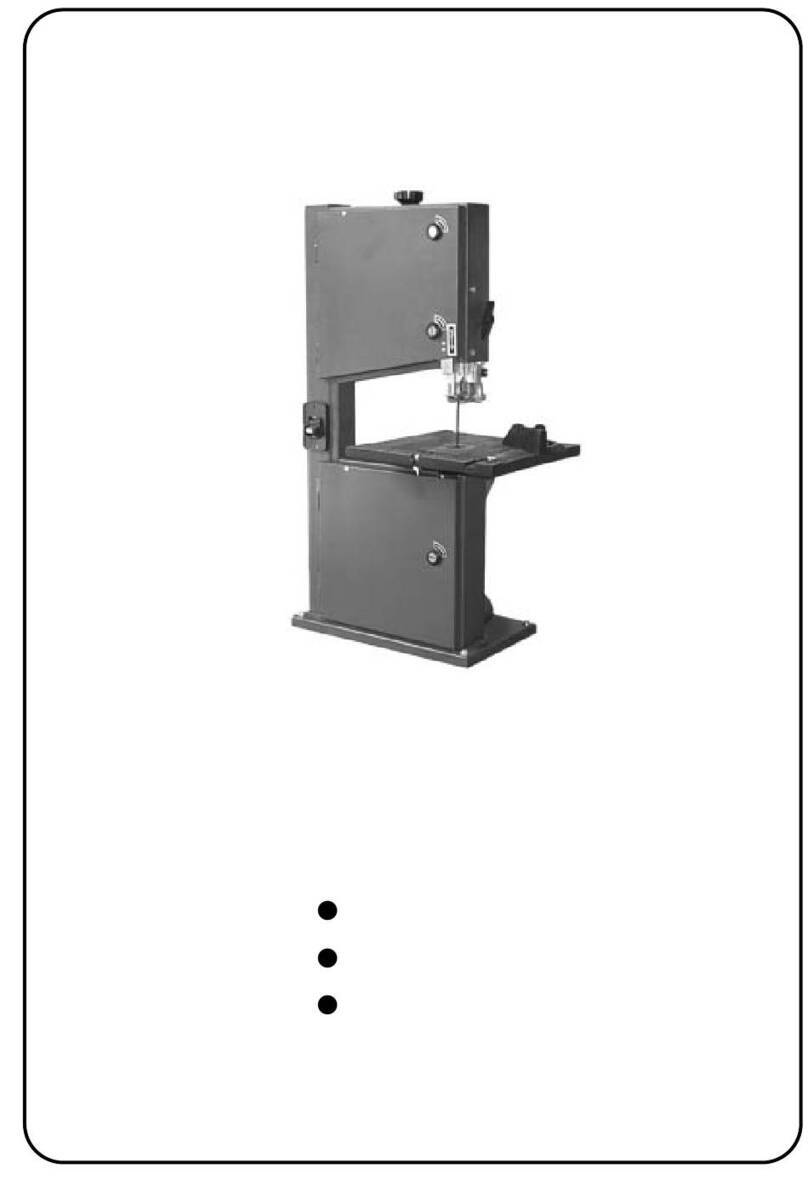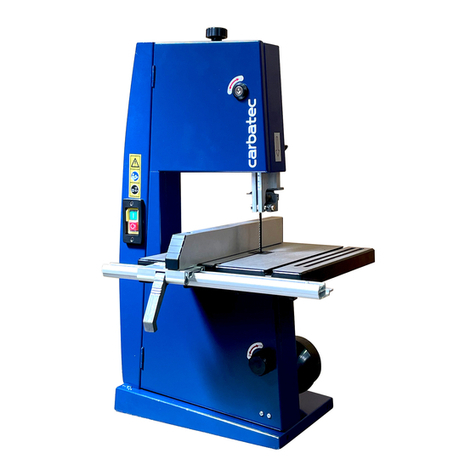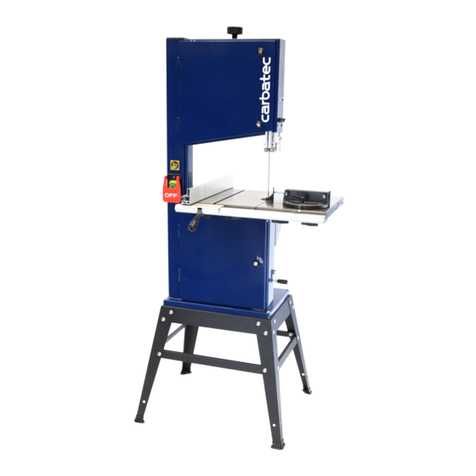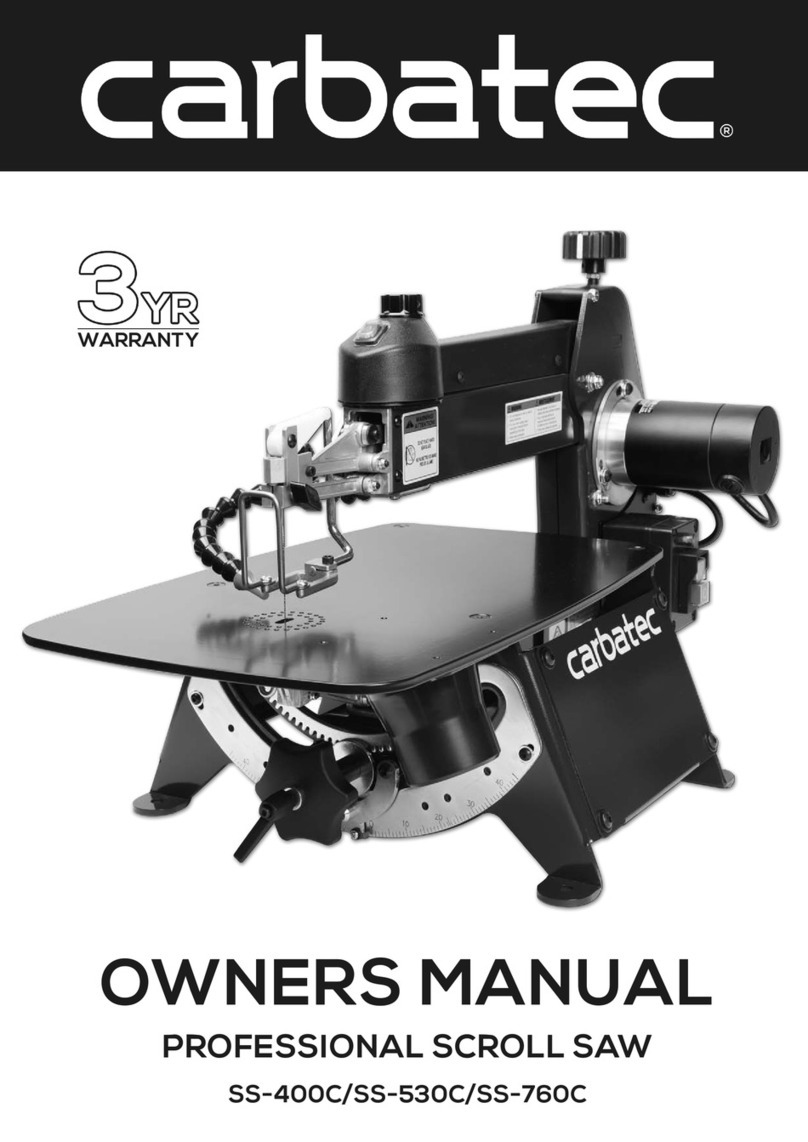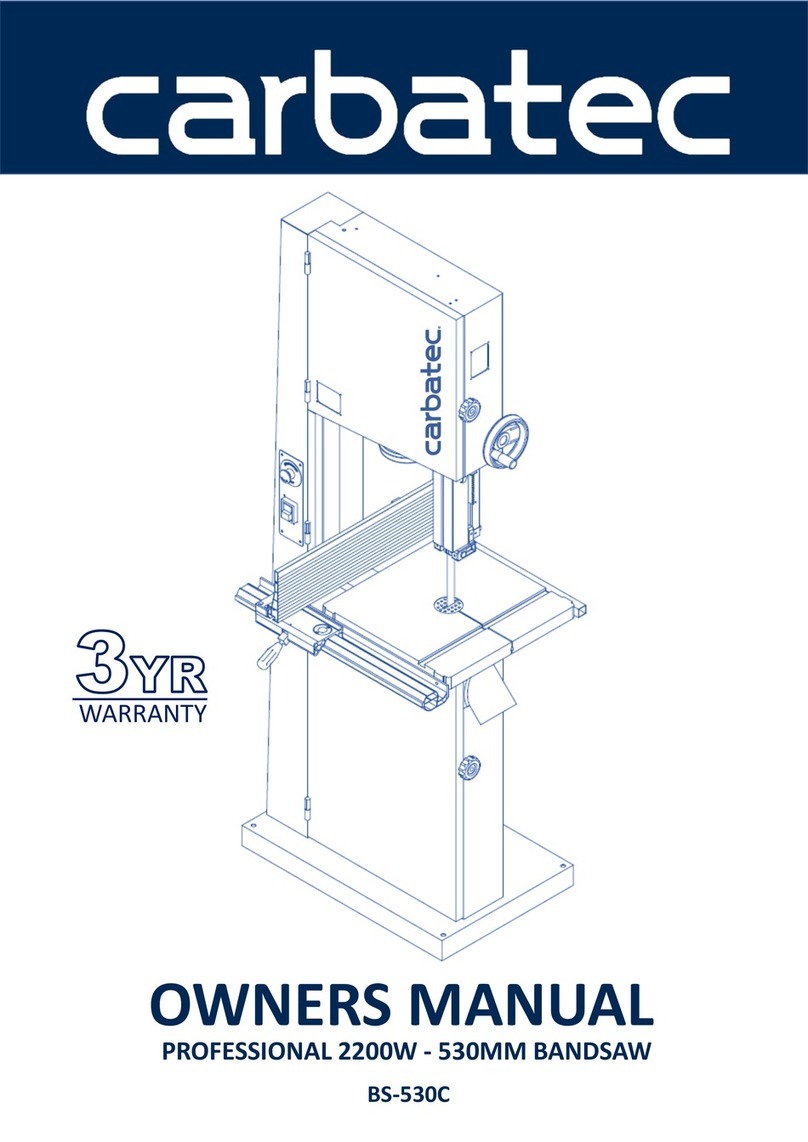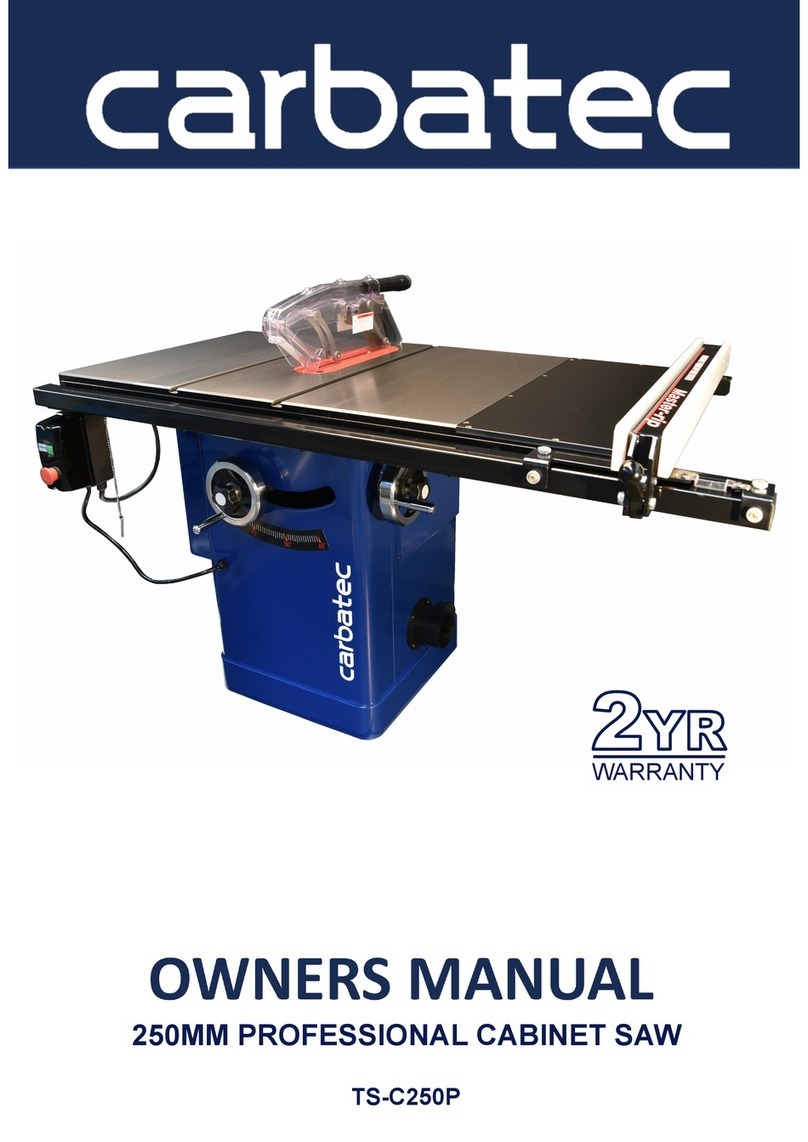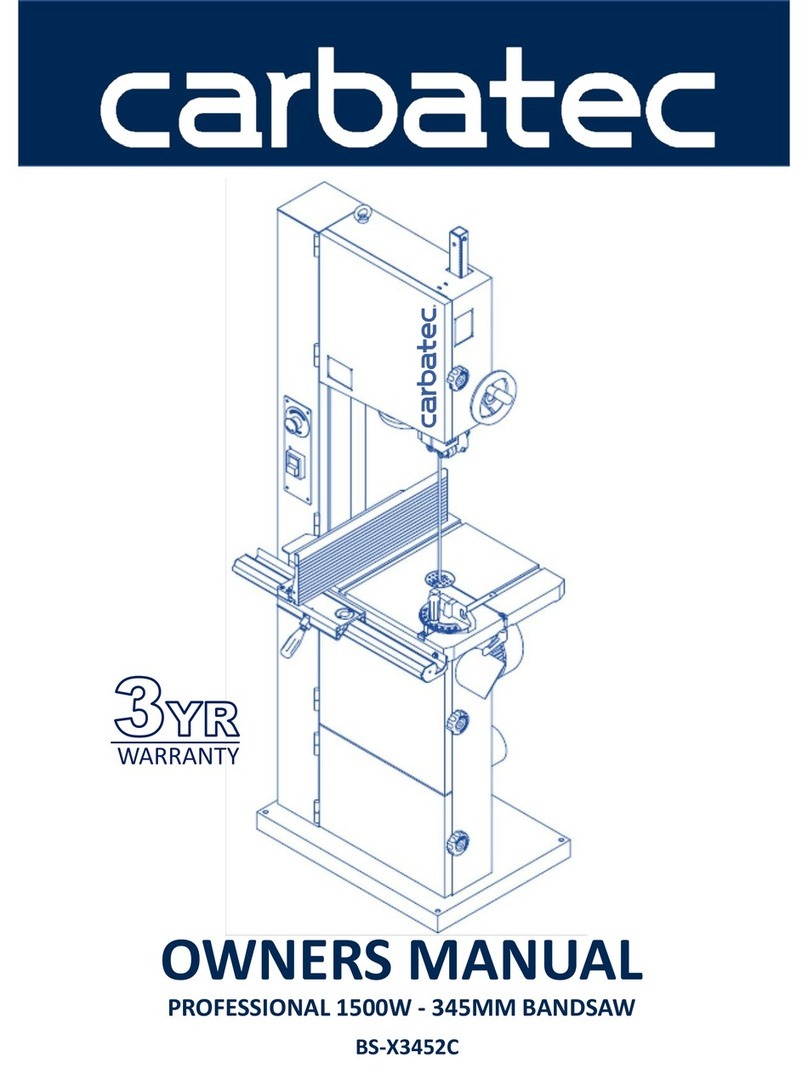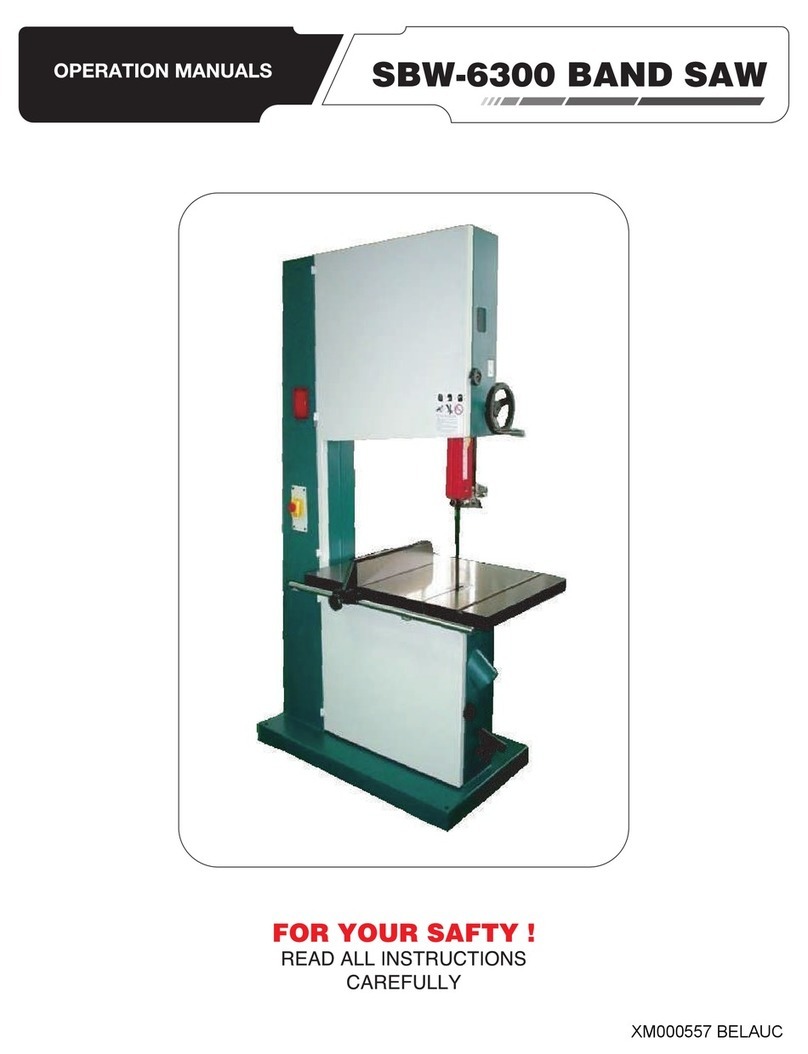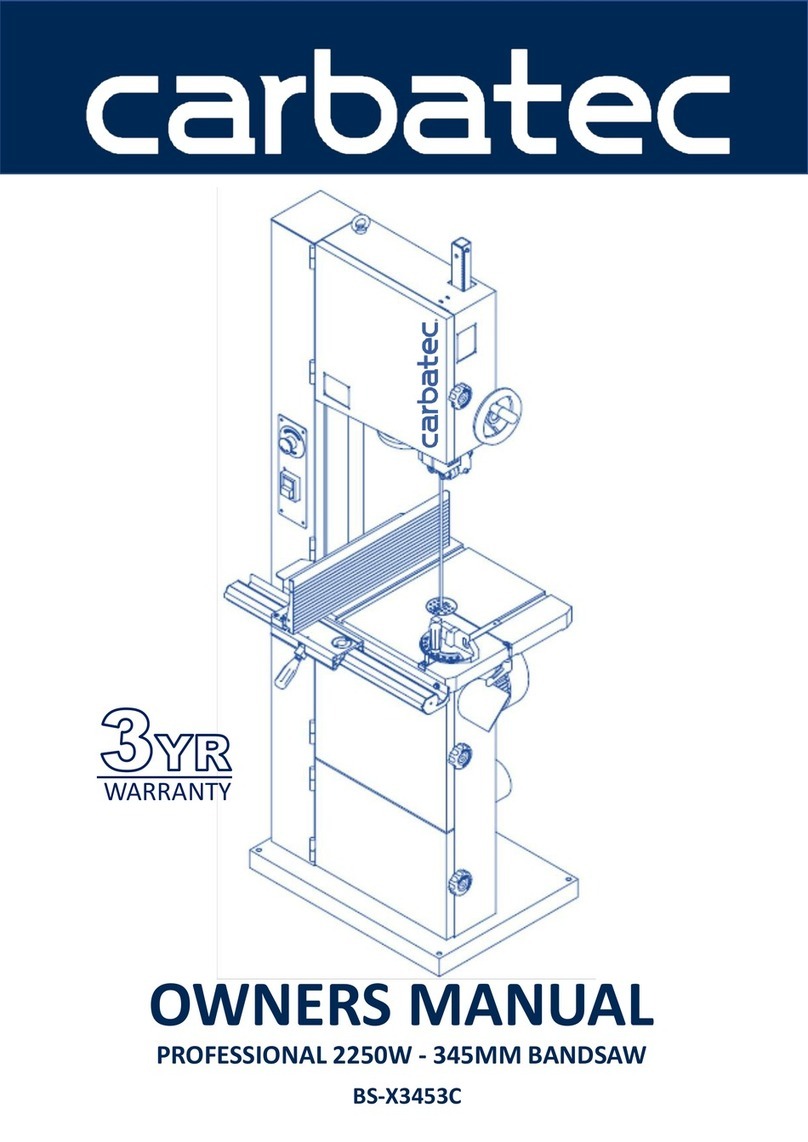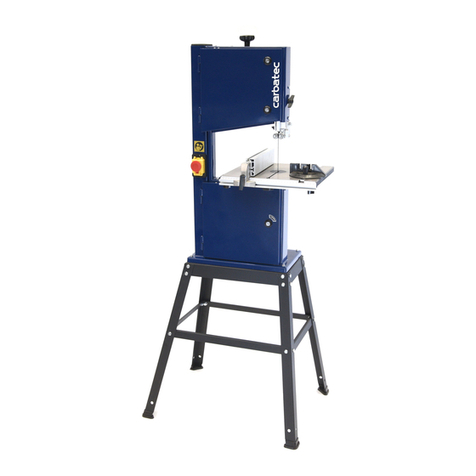General Instructions for 230V Machines
07
UNDER NO CIRCUMSTANCES SHOULD CHILDREN
BE ALLOWED IN WORK AREAS
t is good practice to leave the machine unplugged until
work is about to commence, also make sure to unplug
the machine when it is not in use, or unattended.
Always disconnect by pulling on the plug body and
not the cable. Once you are ready to commence work,
remove any tools used in the setting operations and
place safely out of the way. Re-connect the machine.
It is also recommended that you use switched supply
outlets.
Carry out a final check e.g. check the cutting tool,
drill bit, saw blade etc., is securely tightened in the
machine, check you have the correct speed and
function set, check that the cutting path of the timber
is unobstructed, etc.
Most machines these days are fitted with NVR contact
switches so that machines cannot remain inadvertently
switched ‘ON’. However, it is a good habit to train
yourself to check that the machine is not ‘switched
on’ prior to connecting the mains supply, in case you
happen to be using one of the older machines.
Make sure you are comfortable before you start work,
balanced, not reaching etc.,
If the work you are carrying out is liable to generate
flying grit, dust or chips, wear the appropriate safety
clothing, goggles, gloves, masks etc., If the work
operation appears to be excessively noisy, wear
ear-defenders. If you wear your hair in a long
style, wearing a cap, safety helmet, hairnet, even a
sweatband, will minimise the possibility of your hair
being caught up in the rotating parts of the machine,
likewise, consideration should be given to the removal
of rings and wristwatches, if these are liable to be a
‘snag’ hazard. Consideration should also be given to
non-slip footwear, etc.
DO NOT work with cutting or boring machines of any
description if you are tired, your attention is wandering
or you are being subjected to distraction. A deep cut, a
lost fingertip or worse; is not worth it!
DO NOT use this machine within the designated safety
areas of flammable liquid stores or in areas where there
may be volatile gases. There are very expensive, very
specialised machines for working in these areas,
THIS IS NOT ONE OF THEM.
CHECK that cutters, drills, blades etc., are the correct
type and size, are undamaged and are kept clean and
sharp, this will maintain their operating performance
and lessen the loading on the machine.
If possible always fit dust extraction to machines that
are producing high rates of sawdust, shavings, chips
etc. Above all, OBSERVE.... make sure you know what
is happening around you, and USE YOUR COMMON
SENSE.
REMEMBER, YOU ARE ULTIMATELY RESPONSIBLE
FOR YOUR OWN SAFETY THIS MACHINE IS
DESIGNED TO CUT TIMBER AND TIMBER
DERIVATIVE PRODUCTS. DO NOT USE FOR ANY
OTHER MATERIALS.
